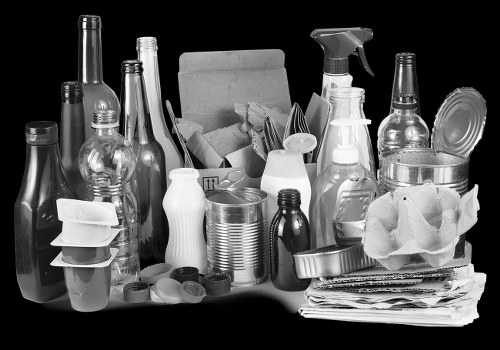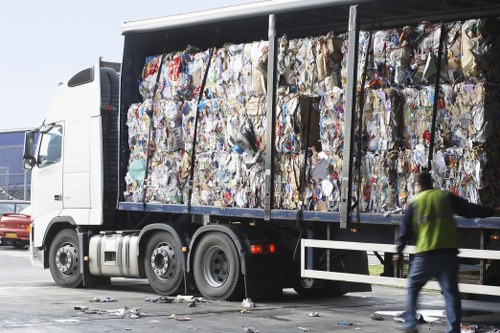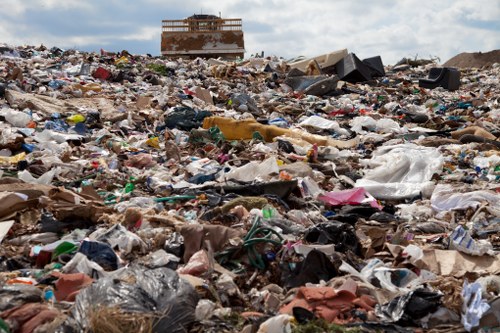Waste Disposal Canary Wharf: Efficient Solutions for a Sustainable Future

Proper waste disposal is crucial for maintaining the cleanliness and sustainability of any bustling area, and Canary Wharf is no exception. As one of London's leading financial hubs, Canary Wharf generates a significant amount of waste daily. This article explores the waste disposal systems in place, the challenges faced, and the innovative solutions being implemented to ensure a cleaner and greener Canary Wharf.
Canary Wharf's strategic location and high density of businesses make waste management a complex task. The area's commitment to environmental responsibility necessitates efficient waste disposal methods that can handle both commercial and residential waste effectively.
Understanding the waste disposal process in Canary Wharf involves examining the types of waste generated, the methods of collection, and the facilities available for processing and recycling. This comprehensive look provides insight into how Canary Wharf maintains its reputation as a modern and sustainable business district.

Types of Waste Generated in Canary Wharf
Canary Wharf produces a diverse range of waste types, including:
- **Commercial Waste**: Office supplies, electronic waste, packaging materials.
- **Residential Waste**: Household garbage, recycling, and compostable materials.
- **Hazardous Waste**: Batteries, chemicals, and electronic waste that require special handling.
- **Construction Waste**: Debris from ongoing development projects within the area.
Each type of waste requires specific disposal methods to ensure safety and environmental protection. The categorization of waste helps in streamlining the disposal process and maximizing recycling efforts.
Proper segregation at the source is encouraged to facilitate effective waste management. Businesses and residents alike are educated on how to sort their waste to enhance recycling rates and reduce landfill usage.

Waste Collection Methods in Canary Wharf
Canary Wharf employs several waste collection methods to handle its diverse waste stream:
- Scheduled Collection: Regular collection of waste by municipal services ensures waste is removed efficiently.
- Recycling Programs: Dedicated recycling bins are placed throughout the area to collect paper, plastic, and glass.
- Hazardous Waste Disposal: Special collection events and facilities handle hazardous materials safely.
- On-Site Waste Management: Large businesses often have their own waste disposal systems to manage their specific needs.
These methods are designed to accommodate the high volume of waste produced while minimizing environmental impact. By optimizing collection schedules and routes, Canary Wharf reduces the carbon footprint associated with waste transport.
Innovative technologies, such as smart bins and real-time collection tracking, are being integrated to enhance the efficiency of waste collection services.

Recycling and Sustainability Initiatives
Recycling is a cornerstone of Canary Wharf's waste disposal strategy. The area has implemented several initiatives to promote sustainability:
- **Recycling Centers**: Centralized facilities where residents and businesses can drop off recyclable materials.
- **Composting Programs**: Organic waste is collected and processed to create compost, reducing landfill use.
- **Waste-to-Energy Plants**: Converts non-recyclable waste into energy, providing a renewable power source.
- **Educational Campaigns**: Informing the community about the importance of recycling and how to participate effectively.
These initiatives not only reduce the amount of waste sent to landfills but also promote a culture of environmental responsibility among the community. By investing in recycling infrastructure and technology, Canary Wharf supports sustainable growth and reduces its overall environmental impact.
The integration of green practices in everyday operations helps Canary Wharf move towards a zero-waste future, aligning with global sustainability goals.

Challenges and Future Directions
Despite the robust waste disposal systems in place, Canary Wharf faces several challenges:
- High Waste Volume: The constant influx of businesses and residents increases waste generation.
- Space Limitations: Limited space for waste processing facilities within the area.
- Regulatory Compliance: Adhering to strict environmental regulations requires continuous monitoring and adaptation.
- Public Participation: Ensuring that all stakeholders actively participate in waste management efforts.
To address these challenges, Canary Wharf is exploring innovative solutions such as:
- **Advanced Recycling Technologies**: Implementing state-of-the-art equipment to enhance recycling efficiency.
- **Waste Reduction Programs**: Encouraging businesses to minimize waste generation through sustainable practices.
- **Collaborations with Environmental Organizations**: Partnering with experts to develop and implement effective waste disposal strategies.
- **Community Engagement**: Increasing awareness and involvement through educational initiatives and incentives.
Looking ahead, Canary Wharf aims to become a model for sustainable waste management, setting standards for other urban areas to follow. Continuous improvement and innovation are key to overcoming current obstacles and achieving long-term environmental goals.
By prioritizing waste reduction and sustainability, Canary Wharf not only enhances its own livability but also contributes positively to the broader fight against environmental degradation.

10-15 Closest Areas to Canary Wharf for Waste Disposal
Canary Wharf is surrounded by several key areas that contribute to and benefit from its waste disposal systems. Here are the 15 closest areas:
- Stratford - Located just east, Stratford offers additional recycling facilities and waste management support.
- Greenwich - South of Canary Wharf, Greenwich provides community-based waste collection services.
- Poplar - Adjacent to Canary Wharf, Poplar enhances waste processing capacity with its own infrastructure.
- Wapping - North-east, Wapping focuses on sustainable waste practices and recycling initiatives.
- Isle of Dogs - Directly connected, the Isle of Dogs shares waste disposal resources and facilities.
- Blackwall - To the north, Blackwall collaborates on waste reduction programs and services.
- Rotherhithe - Southwest, Rotherhithe supports waste management through community programs.
- Lower Lea Valley - West, Lower Lea Valley integrates waste disposal into its development plans.
- Millwall - Northeast, Millwall contributes to waste collection with local services.
- Canning Town - Northwest, Canning Town enhances waste disposal through municipal services.
- Bow - North, Bow participates in regional recycling initiatives and waste management efforts.
- West India Docks - East, West India Docks provides logistical support for waste transportation.
- Canary Riverside - Surrounding area that collaborates on comprehensive waste disposal strategies.
- Royal Docks - Southeast, Royal Docks integrates industrial waste management with residential services.
- Pudding Mill Lane - South, Pudding Mill Lane offers specialized waste collection for businesses.
Each of these areas plays a vital role in the overall waste management ecosystem of Canary Wharf, ensuring efficient disposal and recycling processes that benefit the entire region.
Collaboration among these neighborhoods fosters a unified approach to waste management, enhancing the effectiveness of disposal methods and promoting sustainability across the board.

Conclusion
Waste disposal in Canary Wharf is a multifaceted challenge that requires coordinated efforts from businesses, residents, and local authorities. Through effective waste collection methods, robust recycling programs, and continuous innovation, Canary Wharf is making significant strides towards sustainable waste management.
The area's strategic initiatives not only address current waste disposal needs but also set the foundation for a more sustainable future. By embracing advanced technologies and fostering community engagement, Canary Wharf exemplifies how urban centers can manage waste efficiently while minimizing environmental impact.
As Canary Wharf continues to grow, its commitment to effective waste disposal and sustainability will remain a cornerstone of its success, ensuring a clean and green environment for generations to come.

FAQs
1. How is waste collected in Canary Wharf?
Waste in Canary Wharf is collected through scheduled municipal services, recycling programs, hazardous waste collection events, and on-site waste management systems for large businesses.
2. What types of waste are recycled in Canary Wharf?
Canary Wharf recycles paper, plastic, glass, and electronic waste. Additionally, organic waste is composted to reduce landfill usage.
3. Are there any special programs for hazardous waste disposal?
Yes, Canary Wharf organizes special collection events and has designated facilities to safely handle and dispose of hazardous materials like batteries and chemicals.
4. How does Canary Wharf promote waste reduction among businesses?
Canary Wharf promotes waste reduction through sustainable practices, providing recycling infrastructure, and encouraging businesses to minimize waste generation.
5. What future initiatives are planned for waste management in Canary Wharf?
Future initiatives include implementing advanced recycling technologies, enhancing waste-to-energy projects, and increasing community engagement through educational campaigns.